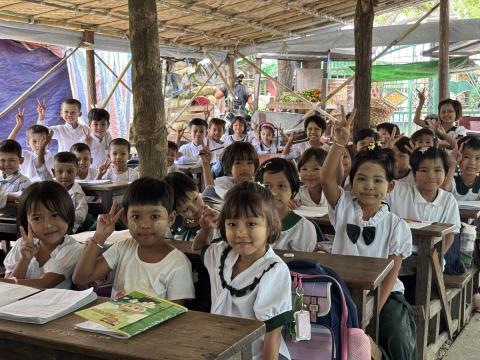From Ruins to Resilience: Building Weather-resistant School Shelter After Myanmar’s Earthquake

When classrooms collapsed, World Vision and local leaders raced against time to restore learning—and hope—for 120 children in Thiri Mingalar.
When a powerful 7.7 magnitude earthquake struck Myanmar earlier this year, it not only shattered homes but also disrupted the futures of hundreds of children. In Thiri Mingalar Ward, Chanmyathazi Township, the local primary school was left in ruins, forcing 120 students out of classrooms and into makeshift shelters that barely shielded them from scorching heat and monsoon rains.
Headmistress Daw Lwin Lwin Maw refused to let learning stop. She rallied the community to set up temporary classrooms, but the conditions were harsh. “Recently, 10 of my students got sick and were absent because they caught colds,” she said, describing the damp, leaking shelters that left children vulnerable.
The crisis came to light when a community volunteer raised the alarm through World Vision’s Accountability & Feedback Mechanism. Within days, World Vision’s team was on the ground. By June 30—just six days after the initial assessment—a 20x60-foot weather-resistant school shelter stood ready, built with bamboo poles, roofing, and ropes funded by the Private-Non-Sponsorship (PNS) pool. The rapid response restored not just education but hope.
Today, children are back in safe classrooms, and teachers can teach without fear. “Thank you very much, World Vision, for building such a nice school shelter for our children,” said one grateful mother. For World Vision, it was a promise kept: that even in disaster, every child deserves the chance to learn, grow, and thrive.